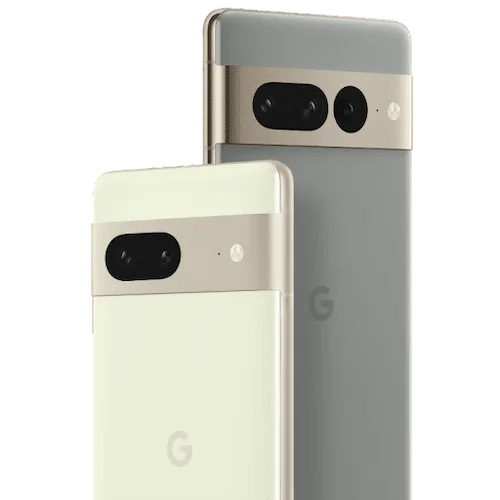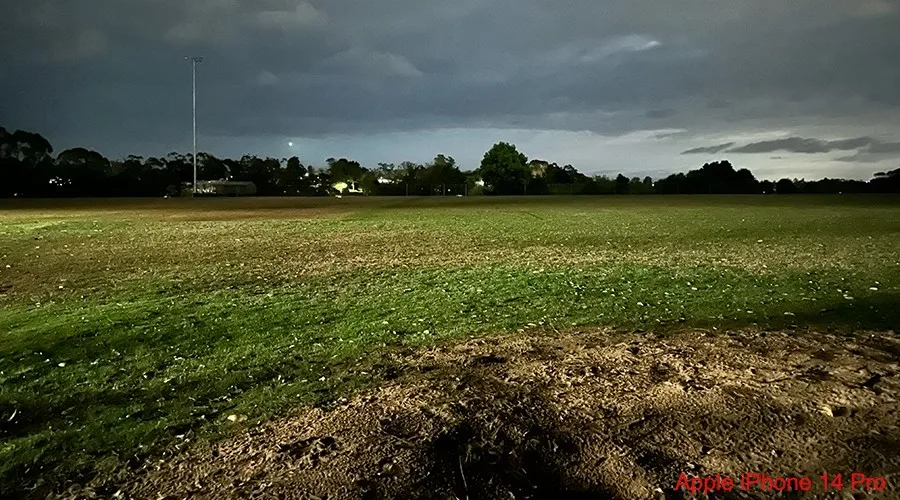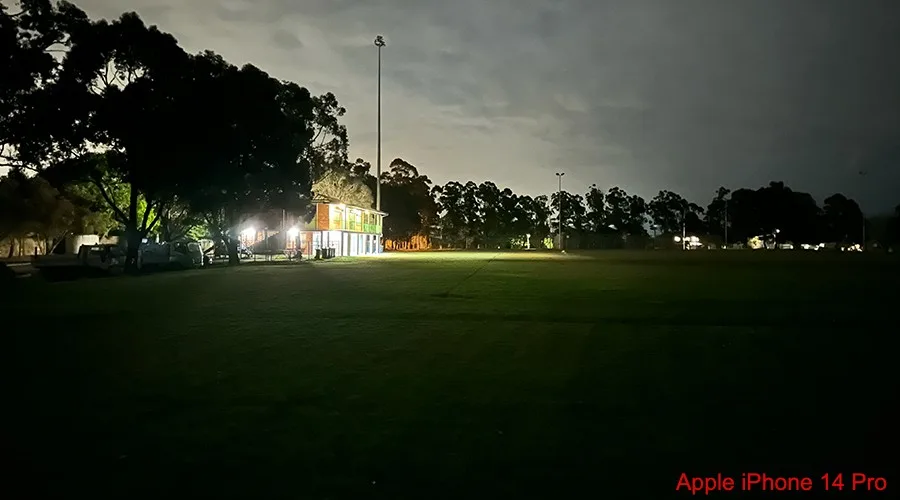Google Pixel 7 Pro review: A controlled smartphone experience

-
- Battery Score
- Camera Score
4
- Design Score
4
- Performance Score
4
- Battery Score
Summary
Quick verdict: The Pixel 7 Pro continues Google's journey through premium phones, offering good performance and a strong, AI-guided camera that will suit everyday snappers more than it will pro shooters.
- Great cameras
- Clean Android UI with quick updates promised
- Lower price point than most flagship phones
- Super slippery without a case – and Pixel 6 Pro cases won’t fit
- Face unlock isn’t all that secure
- A very gradual refinement of the Pixel 6 Pro, which may disappoint Google fans
Details
Pricing & Availability
| RRP | $1,299 |
| Launch date | 2022-10 |
The Pixel 7 Pro follows on from 2021's generally very good Pixel 6 Pro. And when I say follow, it's really following it closely.
Google has only lightly refined the Pixel recipe for the 2022 Pro model. While that does mean it's still one of the best phones you can buy, especially as it's not seen any price rise, that also means that it's not without a few flaws or areas where other premium phones outshine it.
Design: Smooth – almost too smooth
Image: Alex Kidman/Finder
Like the Pixel 6 Pro, the Pixel 7 Pro is built around a 6.7-inch OLED display with support for up to 120Hz refresh rates and a centrally mounted holepunch-style camera.
Put the 2 side by side and you'd genuinely struggle to tell them apart. Google has done some tweaking with the screen's brightness, upping it to 1500 nits which does enable clearer outdoor viewing in direct sunlight.
However, flip the Pixel 7 Pro over and the new design notes become more apparent.
The huge black camera bar that was the defining feature of the Pixel 6 Pro has been refined into a smoother, aluminium-finished camera bar that wraps neatly around the sides.
This does have the effect of making the camera modules stand out a great deal more, but it equally gives it a nice dash of style.
Colour choices have changed in both name and layout. Gone is the 2-tone effect on the back of the Pixel 6 Pro, in favour of continuous colour along the entire back excluding the camera bar.
Image: Alex Kidman/Finder
Alongside the Obsidian and Snow colours that are effectively this year's Stormy Black or Cloudy White is a new Hazel finish. It's what I've tested with, a grey-green affair that I don't entirely love. However, I can see it appealing to those who want a more "Pro" looking phone. It certainly looks slick.
One word of warning about the Pixel 7's slick design, though.
It's really smooth and even though I've only been testing it for a week, I've already had it slip out of my grasp and pocket more than once.
The Pixel 7 Pro is equipped with Corning Gorilla Glass Victus front and back. Anyone not investing in a case is essentially gambling that they'll be able to grab the Pixel 7 Pro before it slips away onto harder surfaces.
The catch here is that while the Pixel 7 Pro looks a lot like the Pixel 6 Pro, they aren't exactly the same in dimensions or layout. The Pixel 7 Pro measures 162.9x76.6x8.9mm and 212g compared to the 163.9x75.9x8.9mm and 210g of the Pixel 6 Pro.
That might be within tolerances of some Pixel 6 Pro cases – I've tested with Google's own Pixel 6 Pro case and it will fit – but it won't likely work all that well because Google has shifted the volume buttons down by a couple of millimetres as well.
In the official Google case, this leads to the up volume constantly being in an on position and the down volume button being inaccessible.
Camera: Smart, but guided photography all the way
Image: Alex Kidman/Finder
The Pixel 7 Pro gets the best camera array of any Pixel phone to date, although on paper there are only slight differences between it and last year's Pixel 6 Pro. Both feature triple rear lenses covering a main 50MP primary, 12MP ultrawide and 48MP telephoto lenses.
There's even a slight specification drop at the front, with the Pixel 6 Pro's 11.1MP sensor giving way to a technically lesser 10.8MP selfie camera.
However, Google has made a few hardware changes and tweaked its camera software markedly to ensure the Pixel 7 Pro outshoots its predecessors, making it one of the easiest cameras to shoot good photos with.
The one caveat I'd apply there is that a lot of what makes the Pixel 7 Pro a special camera phone lies in Google's post-processing and AI algorithms.
Typically with a "Pro" phone, you see features pitched at the professional crowd, but not all of them will be happy letting Google make the creative and processing choices that are very much part of the Pixel photo experience.
In regular conditions, the Pixel 7 Pro shoots well, but of course, it does. You don't need to spend Pixel 7 Pro money to get a good daytime camera.
To test out the Pixel 7 Pro's low-light shooting capabilities, where Google claims improved night speeds and clarity, I headed once more to a local park after dark to test out how well it captured light against other flagship phones.
Specifically, I packed the Pixel 7 Pro, Pixel 7, Pixel 6 Pro and my current favourite low-light shooter, the Apple iPhone 14 Pro.
Yes, that's not an Android phone, and I would have loved to test against a Samsung Galaxy S22 Ultra as well, but I didn't have one. You'll just have to draw its photos in your mind, or with a crayon or something.
First up, the Pixel 6 Pro, taking a shot out over the field to capture light in a darker area, and then of the clubhouse for higher levels of area contrast:
Image: Alex Kidman/Finder
Image: Alex Kidman/Finder
Neither is a bad shot. While it's now the older model, the Pixel 6 Pro is still a very capable low-light camera.
However, it is outdone by its more contemporary competition. Here's how the regular Pixel 7 handled those shots:
Image: Alex Kidman/Finder
Image: Alex Kidman/Finder
There's a little more detail in the grass and obviously a contrast choice in the clouds to deal with here. While these aren't meant to be aesthetic shots, I definitely prefer how the Pixel 7 handles these shots.
Not surprisingly, given they both lean on the same algorithms and Google's new Tensor G2 processor, the Pixel 7 Pro takes nearly identical low-light shots:
Image: Alex Kidman/Finder
Image: Alex Kidman/Finder
Nice work, Mr Google, but there's still the Apple iPhone 14 Pro to contend with:

Image: Alex Kidman/Finder

Image: Alex Kidman/Finder
The iPhone 14 Pro clearly grabs more light in the first shot than any Google phone, although at the cost of some slightly unusual colour saturation.
That's something that earlier Pixel phones used to do a lot, leading to a rather crayon-soaked colour palette. Still, I'd give the low-light ground to the iPhone for that first shot without a doubt.
The second shot is more of a toss-up, leaning towards the Pixel 7 Pro's more realistic depiction of the scene, especially the clouds. The iPhone's rendition is nice, but the clouds look like they're painted in compared to the realistic shapes that the Pixel 7 Pro manages.
The practical upshot here is that the Pixel 7 Pro certainly competes in the low-light arena well, especially when you consider that the most expensive high-storage variant of the Pixel 7 Pro is $150 less than the cheapest iPhone 14 Pro – and the cheapest model can be yours for a hefty $450 less.
With similar low-light performance across the Pixel 7 and Pixel 7 Pro, you might be tempted towards the even smaller and cheaper Pixel.
It's a good phone, but where the Pro scores over it in camera terms is with the inclusion of a 48MP telephoto lens, boosted up to 5x optical and 30x hybrid digital zoom over the Pixel 6 Pro's 4x optical/20x hybrid digital zoom lens.
Typically when you get out to those extreme zoom distances the quality falls off a cliff, and I was 100% ready for that to be the case with the Pixel 7 Pro.
Surprisingly, this wasn't the case, with the Pixel 7 Pro delivering some of the best hybrid zooms, even from handheld that I've ever encountered.
Here's an example of how well it can work. Out for a jog, I stopped to observe some sulphur-crested cockatoos on a telephone wire across the road. Here's how they look through the Pixel 7 Pro's ultrawide lens, taking in the entire scene:
Image: Alex Kidman/Finder
So far, so good, as you'd expect, and the same is true with the standard wide lens too.
Image: Alex Kidman/Finder
The Pixel 7 Pro offers a 2x zoom, cropping the standard 50MP wide lens in the exact same style as the iPhone 14 Pro and Pro Max cameras. That's fine too as a shot, creeping ever closer to the noisy birds:
Image: Alex Kidman/Finder
At full 5x zoom, it's still delivering a pleasing shot:
Image: Alex Kidman/Finder
At 10x zoom, the Pixel 7 Pro changes up its lighting preferences and I start feeling like I'm intruding on this bird's privacy. Also, I start hoping that it won't suddenly fly away:
Image: Alex Kidman/Finder
Longer zooms than 10x hybrid typically fall apart fast with lots of blocky interpolation errors and loss of details. Here's how the Pixel 7 Pro managed at full 30x for a handheld shot:
Image: Alex Kidman/Finder
There is a little softness around the feathers where the Pixel 7 Pro is clearly doing a little more algorithmic leaning than straight image capture, but considering the distance, lighting and handheld nature of the shot, this is a very pleasing result.
The AI camera games don't stop there. Alongside features introduced in last year's Pixels such as Magic Eraser and Motion photo modes, you also get new tools such as cinematic video (a very iPhone-esque inclusion).
This can work with the right subject and planned motion, but it's not great with more ad-hoc shooting where the algorithm can all too easily introduce very odd focus effects. As with the iPhone version of the same feature, I don't think Hollywood will be abandoning its higher-end camera rigs any time soon.
The Pixel 7 Pro also gets an enhanced macro mode. I've tested so many macro cameras on cheap phones lately that I just couldn't help but shudder involuntarily because all too often macro modes are impossible to handle with repeated good results.
The Pixel 7 Pro is the exception to that rule because it really does make getting pleasing macro shots a breeze.
Say hello to my little macro friend, Mr Bee:
Image: Alex Kidman/Finder
That's the full shot; Mr Bee makes an even better cropped shot to show off the Pixel 7 Pro's level of detail:
Image: Alex Kidman/Finder
I don't generally like being that close to bees, but the Pixel 7 Pro does make me more inclined to want to capture shots of them at work.
The Pixel 7 Pro also promises a photo unblurring feature which can work with any image, not just those taken on the phone itself.
It's an editing function hidden within Google Photos, and it's not quite as magical as Google makes it out to be. It won't come up in suggestions unless you've got a very blurry photo, although you can invoke it under the tools menu at any time.
The issue is that, like similar functions in, say, Photoshop, it won't always pick the right elements to refocus. Excessive use can lead to very artificial-looking elements.
It's neat to have this kind of functionality baked into a phone, but it's not going to rescue every dodgy photo you've ever taken just because Google says it might be able to.
The selfie camera at the front also adds a face unlock mode, complete with its own fancy facial scan. This isn't quite the same as Apple's Face ID, and Google is at some pains to point out that it's less secure than using the Pixel 7 Pro's in-display fingerprint reader.
It's more involved than using a flat photo the way many other competing Android phones with face unlock do and slightly more secure. But it's not using the Soli radar sensor system that Google dropped into the Pixel 4 and there's no sign of that feature returning any time soon.
Google Pixel 7 Pro sample photos
Image: Alex Kidman/Finder
Image: Alex Kidman/Finder
Image: Alex Kidman/Finder
Image: Alex Kidman/Finder
Image: Alex Kidman/Finder
Image: Alex Kidman/Finder
Image: Alex Kidman/Finder
Image: Alex Kidman/Finder
Image: Alex Kidman/Finder
Image: Alex Kidman/Finder
Image: Alex Kidman/Finder
Image: Alex Kidman/Finder
Performance: Tensor G2 is fast, but not the fastest
Image: Alex Kidman/Finder
The power that runs the Pixel 7 Pro is the new Google Tensor G2 processor, backed with 12GB of RAM and 128GB, 256GB or 512GB of internal storage. As with all Pixels, there's no microSD expansion capability, which I still feel is a pity in general terms.
The Tensor is an interesting beast; Google claims it as their "own" processor, though it owns no chip fabrication plants and it's still got to keep within the broad ARM space that Android phones run on.
At launch, it wasn't possible to benchmark the Tensor G2, as our standard benchmark apps either refused to run, refused to side load, or both at once. That's now been resolved, and the results aren't spectacular for reinforcing Google's claims of processor superiority.
Here's how the Tensor G2 in the Pixel 7 Pro compares against current flagship phones:
Here's how its GPU compares using 3DMark's Wild Life Extreme test:
What that represents in benchmark terms is a phone that's slightly better than last year's model, but not by much. What's more, there are more powerful phones out there, although to be fair to the Pixel 7 Pro, most of those cost a lot more than Google's new flagship phone.
The Pixel experience has always been about clean and basic Android experiences, and the Pixel 7 Pro is no exception. The reality in this high-end space is while benchmarks can show performance differences, there's not much that really pushes those processors to the limit on a daily basis.
I've certainly hit no slowdown issues with the Pixel 7 Pro in this regard, and the clean Android UI is easy to navigate for everyday tasks.
One area where Google soundly trounces the competition in a technical sense is with its 5G implementation. The Pixel 7 Pro is 1 of only 2 phones in Australia that supports the sub-6Ghz and faster mmWave 5G bands, giving it the potential for much higher speeds if you're in an mmWave-supported area.
The only other phone that's done mmWave in Australia? That'd be the Pixel 6 Pro.
To be clear, during my review period my 5G speeds have been good – in the 300–600Mbps down range according to Finder's speed test – suggesting that I'm more in a sub-6Ghz area.
It's disappointing that Samsung and Apple continue to skip out on mmWave for Australian consumers. And while you won't always have mmWave capabilities, if you're paying for a premium smartphone, shouldn't you expect premium performance?
Battery: All-day battery, but not the premium best
Image: Alex Kidman/Finder
While the battery capacity of the Pixel 7 Pro hasn't jumped up from its predecessors, sitting at the familiar 5,000mAh level that so many phones these days offer, Google's claims around the Tensor G2 are that it'll be even more refined on power usage.
To put that to the test, I first ran the Pixel 7 Pro through Finder's standard battery test. Here's how it compared:
That 94% is down a couple of percentage points from last year's phone, possibly due to the enhanced brightness of the Pixel 7 Pro's display.
A phone that can hit over 90% in that test is generally a good bet to last a day's regular usage. That's certainly been my experience with the Pixel 7 Pro to date.
The straight-line nature of our phone test might not show off the Pixel 7 Pro's true battery life all that well, as I've ended most days with a very solid battery percentage left – sometimes over 40% – with regular usage.
Recharging is via USB-C, with Google selling its own 30W charger if you like, though there's none in the box. If wireless charging is more your scene, that works at up to 23W via the 2nd Gen Pixel Stand or up to 12W via a standard Qi charger.
Should you buy the Google Pixel 7 Pro?
- Buy it if you want a highly affordable premium Android experience.
- Don't buy it if you're not willing to put it in a case – it's just that slippery.
Pixel phones are meant to represent Google's own take on what Android can be, sitting at the premium end of the market. There's a lot to like about the Pixel 7 Pro, from the generally superb cameras to the slick 10Hz–120Hz-capable display, the clean Android UI and the inclusion of mmWave 5G in Australia.
This isn't to say it's not without its flaws. Battery life could be better, and hopefully, this isn't the start of a downwards battery trend for Google phones. The slick new design looks lovely onscreen or when you're showing it off, but it's also slippery as hell. A case is essential for any serious Pixel 7 Pro buyer.
Pricing and availability
The Google Pixel 7 Pro is available outright in Australia with pricing starting at $1,299.

Price
RRP: $762.26
How to buy the Google Pixel 7 Pro on a plan
You can buy the Google Pixel 7 Pro on a 12-, 24- or 36-month repayment period with a mobile plan from Telstra, Optus or Vodafone.
Specifications
Display
Camera
Physical Dimensions
Connectivity
Power, storage and battery
Device features
How we tested
I tested the Pixel 7 Pro for just under 1 week, putting it through its paces for battery tests, extensive camera tests, application testing and very limited (at the time of writing) benchmark testing, not without a lot of trying. It was compared against a range of premium phone options including the Pixel 7, Pixel 6 Pro, Apple iPhone 14 Pro and Apple iPhone 14 Pro Max. The Pixel 7 Pro used in this review was supplied by Google for the purposes of testing.
As a phone reviewer, I have more than 2 decades of tech product reviewing under my belt. I'm a multi-time Australian IT Journo award winner, including awards for best reviewer and best technical journalist. I also like iOS and Android equally, just to deal with any accusations of bias towards or against any particular platform. I do concede that Windows Phone wasn't particularly good, though.
Alex Finder
Senior editor
You are about to post a question on finder.com.au:
- Do not enter personal information (eg. surname, phone number, bank details) as your question will be made public
- finder.com.au is a financial comparison and information service, not a bank or product provider
- We cannot provide you with personal advice or recommendations
- Your answer might already be waiting – check previous questions below to see if yours has already been asked
Finder only provides general advice and factual information, so consider your own circumstances, or seek advice before you decide to act on our content. By submitting a question, you're accepting our Terms Of Service and Finder Group Privacy & Cookies Policy.
This site is protected by reCAPTCHA and the Privacy Policy and Terms of Service apply.

